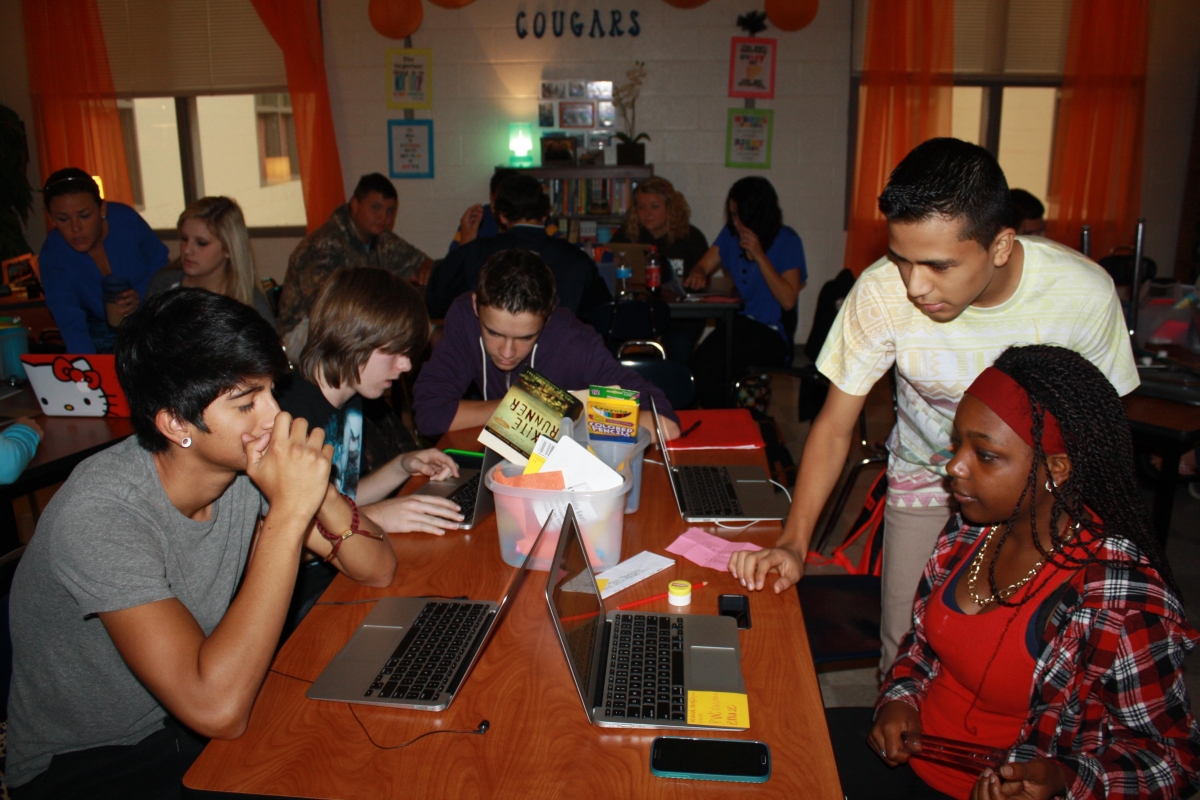Rowan-Salisbury School System in Salisbury, N.C., launched its strategic plan in 2014, with two major areas of focus:
- Digital conversion, and
- Integrating literacy learning across all of the content areas
The districtwide literacy initiative was the result of a committee of educators and parents digging into student data from the previous five years. What we found was a lack of reading proficiency undermining students' performance across the entire curriculum. In fact, the 2014 state composite test scores (math, English language arts/reading and science) showed only 46 percent of students in the district were performing at or above grade level.
In order to support the large gains in reading and literacy required to put all students on track for college and career success, Rowan-Salisbury Schools launched a 1:1 initiative for grades three through 12. High school students received MacBook Air laptops while middle and elementary school students received iPad 4 devices.
The devices were backed up with real digital curriculum planning—it wasn’t technology for technology’s sake by any means. The district also decided to implement cloud-based personalized learning environments that would effectively deliver instruction and independent practice via the new digital devices. Content specialists were tasked with researching and vetting products that were aligned to the district’s curriculum and academic goals. Those specialists put together a list of must-haves that they felt would enable educators to meet all students at their individual reading levels and accelerate learning gains. These “must-haves” included:
- Differentiated instruction
- Embedded assessment
- Regular skills practice
- Instructional resources and professional development for educators
- Easy-to-understand, real-time data to help administrators design and implement impactful action plans
In the end, the team opted for differentiated literacy resources from Achieve3000®: Smarty Ants® for pre-K through grade one, KidBiz3000® for grades two through five, TeenBiz3000® for middle school students, and Empower3000® for high school students. The solutions were implemented during the 2015-2016 school year, and students were tasked with completing at least two activities per week. The programs monitored individual reading performances so that the level of text complexity students encountered automatically increased when a student was ready for more challenging text.
Technology Coaching Smooth the Transition
Additionally, reading coaches in the K-5 schools and literacy coaches in both the middle and high schools helped classroom teachers apply blended learning best practices. The coaches also co-taught, co-planned, observed classroom practices and analyzed students’ performance data from the reading programs in order to help teachers make data-based decisions.
After one year, Rowan-Salisbury Schools System conducted evaluations of elementary, middle and high school students who logged into the solutions at least once from the fall of 2015 through the first part of June 2016. Since the amount of reading that students do during out-of-school hours is a predictor of their in-school academic achievement, one of the focuses of the evaluations was the percentage of students that had accessed the programs outside of school (since the solutions are cloud-based, students could access them anytime or anywhere – even without an internet connection).
The evaluation found that 44 percent of high school students using the literacy programs logged in during after-school hours, while 66 percent of the elementary students and 70 percent of middle school students participated outside of school.
Interestingly, the high school students outdid the other two cohorts in terms of literacy gains. Their Lexile® growth was four times the expected rate for students completing the weekly recommended number of activities. In comparison, middle school students who completed the recommended number of lessons made gains that were nearly 2.5 times the expected reading growth rate. Elementary students who completed the recommended number of lessons made double the expected Lexile growth.
That growth was reflected in school and district performance, too. At the end of the 2015-16 school year, 96 percent of K-8 schools met or exceeded their goal for reading growth, 71.4 percent schools saw gains in science proficiency, and 23 percent of schools exceeded their overall expected growth.
The ongoing success of Rowan-Salisbury Schools is evidence of the efficacy of the blended learning model. Most classrooms today are mixed-ability environments; by helping teachers to differentiate instruction and providing formative assessments for the collection of real-time feedback to inform teaching, blended learning is giving educators an effective and efficient way to get every student on track.












